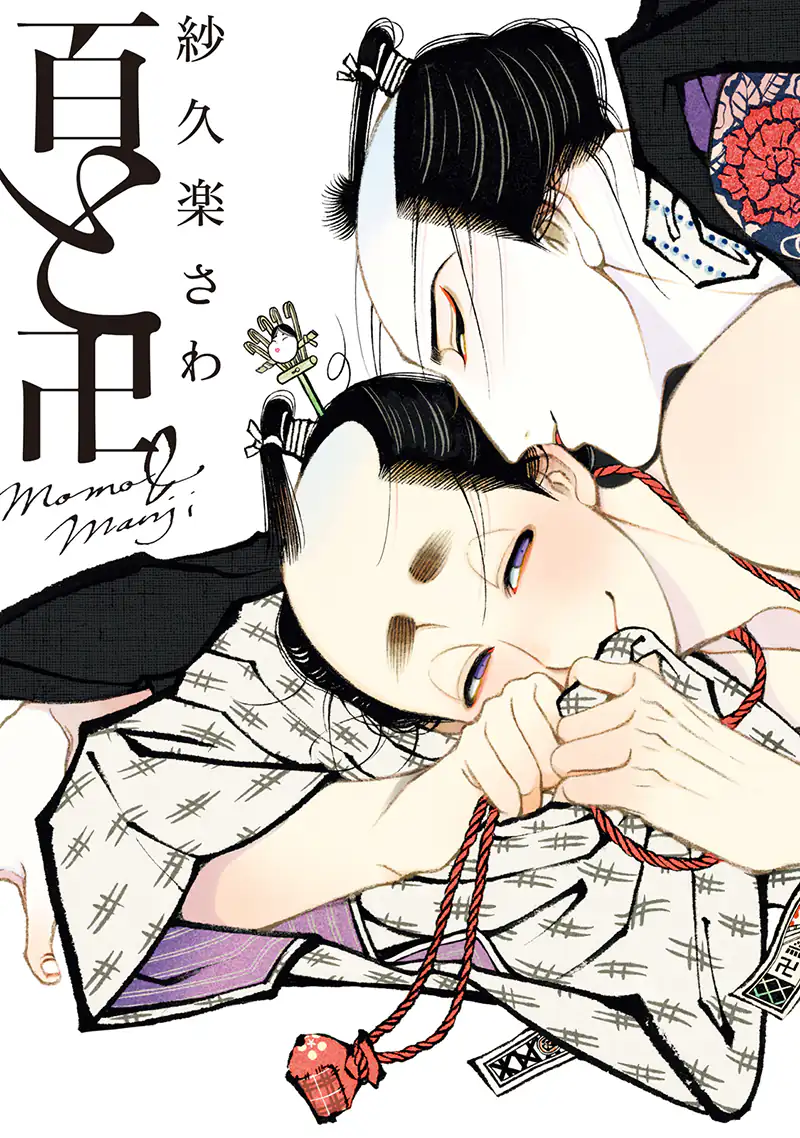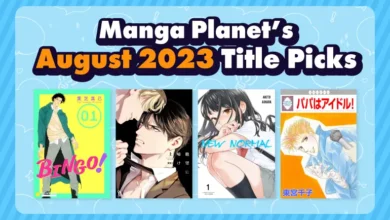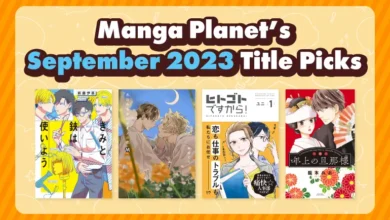4 Manga Inspired by Traditional Japan
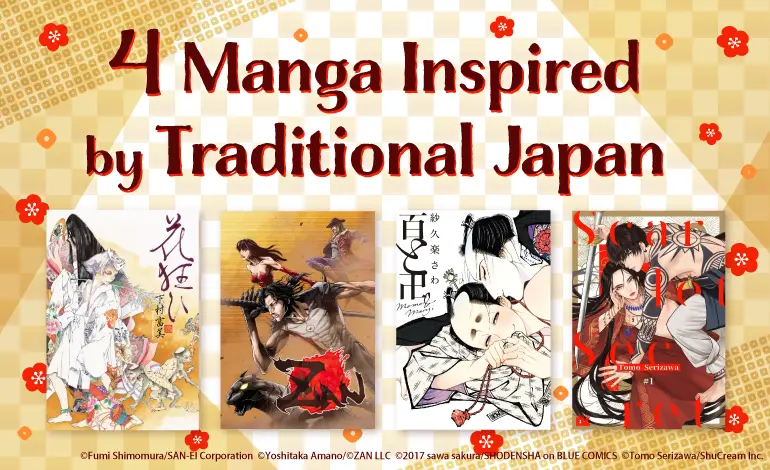
Last Friday, November 3rd, was Culture Day in Japan, a public holiday devoted to celebrating arts and culture. Marking this holiday are activities such as school festivals, free admission to some museums, parades showcasing traditional Japanese culture, and so on.
In honor of Culture Day, we’d like to recommend four manga that take inspiration from traditional Japan, whether set in a historically accurate time period, an alternate version of ancient Japan, or a fantastical setting that borrows traditional Japanese elements.
1. Hana Gurui
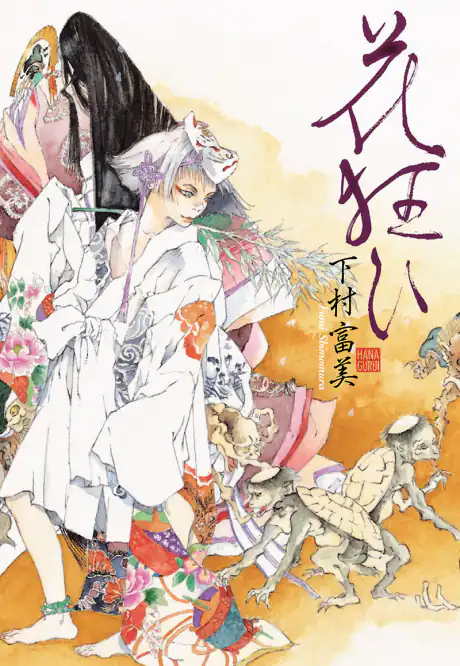 Author: Fumi Shimomura
Author: Fumi Shimomura
Publisher: SAN-EI Corporation
Genre: Shojo/Josei
Status: Completed (1 volume)
Access Options:
- Manga Planet Pass (readable in full)
- Points (readable in full)
- Free preview of Chapter 1
Lauded by none other than influential manga artist Keiko Takemiya, Hana Gurui is an anthology of six supernatural stories, all set in ancient Japan. While most stories contain horror elements such as talking heads, yokai, and not-quite-dead skeletal beings, for the most part these standalone one-shots are meant to elicit emotions other than fear.
We’ll leave it to you to figure out which is which (so go check out Hana Gurui for yourself already!), but once you get past the morbid bits, you’ll find heartwarming reunions proving that love can last beyond the afterlife, bittersweet endings, and even black comedy that’ll have you laughing at the absurdity of the entire situation.
And if you might find some stories confusing — we can’t blame you for that, seeing as illusions and trickery play a part in several stories — why not reread the stories in question again for that “aha” moment? After all, Hana Gurui is quite short, so it can be easily read (and even reread) in one sitting.
2. ZAN
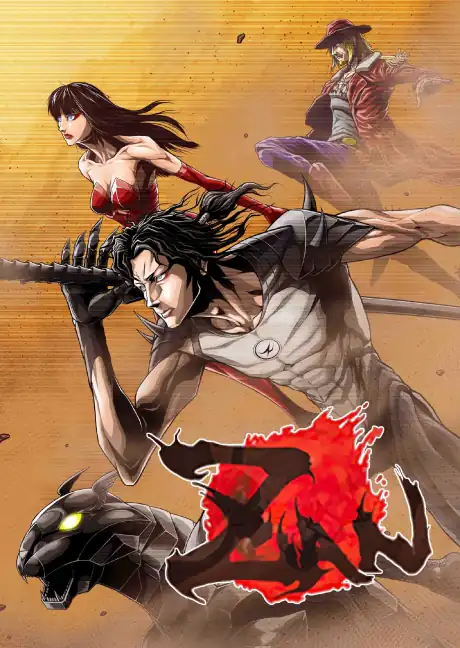 Author: Yoshitaka Amano
Author: Yoshitaka Amano
Story: Mark A.Z. Dippe
Art: GORIO21(Taishi N.)
Publisher: SOZO Comics
Genre: Shonen/Seinen
Status: Ongoing (13 volumes; 1 chapter per volume)
Access Options:
- Manga Planet Pass (all currently available volumes)
- Points (all currently available volumes)
- Free preview of Chapter 1
Despite jumping from one time period and setting to another, the genre-bending ZAN made it to this roundup because, at heart, it’s inspired by traditional Japanese stories and character archetypes. In famous artist Yoshitaka Amano’s first-ever original fantasy graphic novel, our protagonist, Yoshitsugu, is quite literally the wandering samurai archetype, drifting aimlessly through the Boshin War (1868–1869) due to having no clue who he is.
After a spirit goddess appears to him one day, Yoshitsugu begins to slowly regain his memories, eventually realizing that he is Zan, one of the 12 Generals of the Army of Light. (This is, yet again, another reference to traditional Japanese culture, as East Asian Buddhism collectively refers to certain Buddhist deities as the 12 Heavenly Generals, or Juuni Shinsho in Japanese.)
And so begins for Yoshitsugu a journey that transcends time and space, as he travels from one dimension to another to look for the rest of the generals, wherever and whenever in the space-time continuum they may be.
When we say that ZAN plays with genres, settings, and time periods, we really mean it — you’ll just have to read it to find out for yourself. While taking its share of references from traditional Japan, it borrows from different mythological, fantastical, and even science-fiction elements. For one, don’t be surprised to encounter cyborg-like monsters and other creatures in this series!
What’s more, the manga being in full color works to its advantage, as some scenes are depicted quite vividly, with pages looking like a burst of colors. The art is a mix of gritty — which is perfect for an over-the-top, action-packed manga like this — and Yoshitaka Amano’s signature ethereal style.
Each volume of ZAN is actually just one chapter long, so it won’t be too overwhelming to catch up on this series. Take the plunge now to join Yoshitsugu on his surreal and spectacular journey across worlds!
3. Momo and Manji
Author: sawa sakura
Publisher: SHODENSHA Publishing Co.,Ltd.
Genre: Boys’ Love (BL)
Content Warnings: Some depictions of dubious consent
Status: Ongoing (5 volumes)
Access Options:
- Manga Planet Pass (all currently available volumes)
- Points (all currently available volumes)
- Free preview of Chapter 1
Set in the late Bunsei Era (1818–1830), Momo and Manji is a heartfelt story of two men finding love on equal footing and enjoying intimacy in a time period when homosexuality, while not stigmatized, was mostly practiced within strictly defined roles.
The titular protagonists of this series are Momoki (or Momo for short) — an optimistic and affectionate former kagema (male prostitute) — and Manji, a musician who takes on odd jobs here and there to provide for Momo and himself. The story begins with Momo and Manji already in an established relationship, and as it unfolds, we readers find out what past baggage the two hold, and how they’re trying to move forward and find happiness together.
It’s not hard to see why this series has the honor of being the first-ever BL manga to win the Japan Media Arts Festival Excellence Award in 2019. With fantastic characterization and riveting — but also quite heartbreaking — backstories, you’ll certainly be drawn to Momo and Manji, not only as a couple but also as individuals. Their relationship dynamic is incredibly domestic and sweet (but also spicy, *wink wink*), as it’s based on mutual acceptance and overcoming their traumas and shortcomings together.
Author Sawa Sakura’s captivating art style is hard not to fall in love with. Their use of brush strokes and skill at drawing extremely intricate details such as tattoos and kimono patterns will transport you to the world of early 19th-century Japan. At times, certain scenes, especially some of the sensual love scenes, might have you feeling as if you’re looking at a painting from the Edo period — remember, some of the greatest art from that time period were erotic woodblock-print paintings called shunga.
Sawa-sensei’s commitment to historical accuracy is also commendable; you can tell that they certainly did their research. (Do take the time to read their notes at the end of every volume; they’re informative and quite enjoyable to read!) Perhaps not many non-Japanese readers might know about facts such as firefighting being one of the most respected professions in the Edo period (1603–1868) due to how often wooden houses caught fire back then, or about the kagema profession. And while Sawa-sensei’s narrative doesn’t cast any judgment on (former) sex workers like Momo, it also doesn’t shy away from the harsh realities of the profession.
If well-researched and well-characterized historical romance are your thing, you should definitely give Momo and Manji a read. However, do note the content warnings above in case you’re not comfortable reading titles with such depictions. They’re not particularly condoned or endorsed; rather, they’re often just presented matter-of-factly in flashbacks. Still, readers who are sensitive to such topics might still want to skip this title.
4. Scarlet Secret
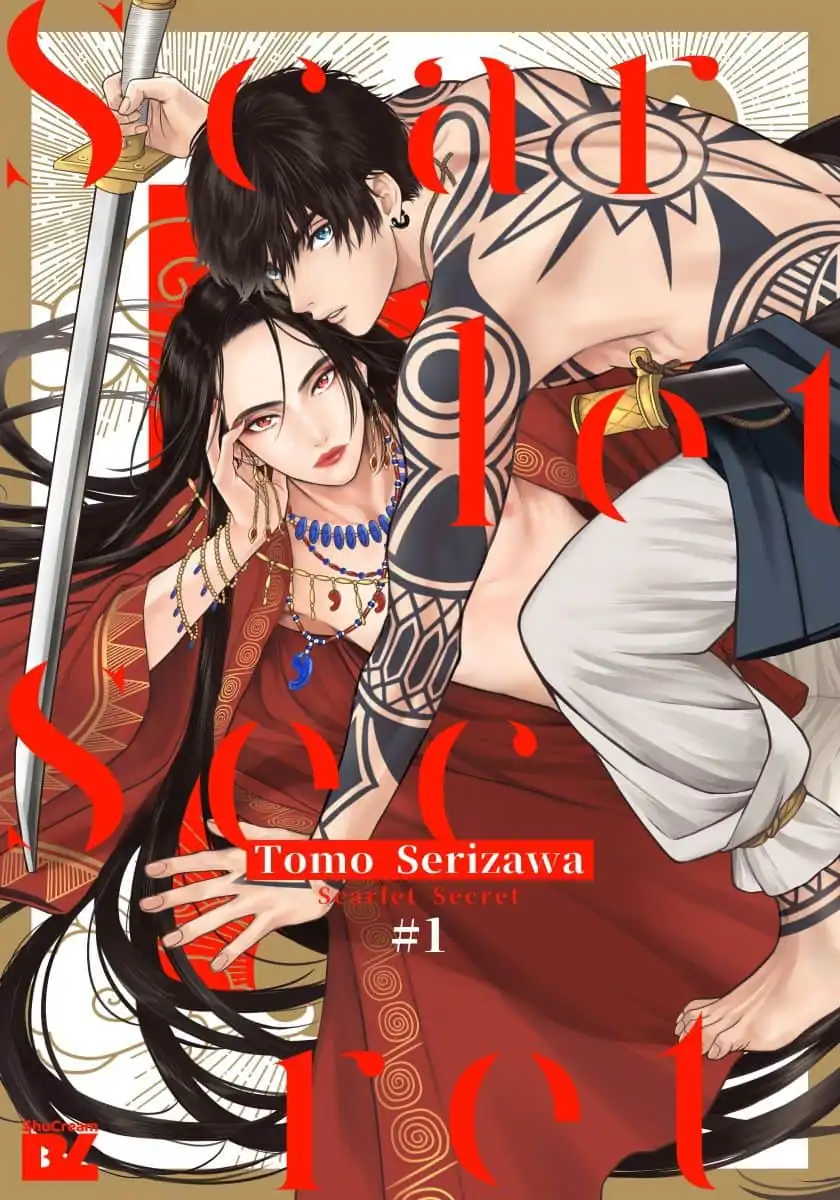 Author: Tomo Serizawa
Author: Tomo Serizawa
Publisher: ShuCream
Genre: Boys’ Love (BL)
Status: Completed (1 volume)
Access Options:
- Manga Planet Pass (partly readable — up to Chapter 3)
- Points (readable in full)
- Free preview of Chapter 1
The intriguing title, whether in Japanese (“Hime Muko” translates to “secret groom”) or in English, and the stunning cover art will no doubt have you wanting to pick up Scarlet Secret, and you definitely should!
Scarlet Secret takes place in Yamatai-koku, a country (or what we would now call state) that was part of the ancient kingdom of Japan around the Yayoi period (1,000 BCE– around 300 CE). Though it alludes to figures that were associated with Yamatai, such as the legendary priestess–queen Himiko, it takes liberties such as adding mystics and magic to the story, as well as making the real identity of queen Himiko a central part of the story.
The story focuses on Yamato, a determined and idealistic young man whom some in his community might consider as having his head in the clouds. He still believes that his childhood best friend (and first crush) Shiki, an orphan who was often picked on for being a foreigner and for his distinctive scarlet eyes, is alive. Meanwhile, everyone else insists that there’s no way Shiki could’ve survived being selected for a ritual sacrifice.
But one day, when Yamato accidentally catches a glimpse of a bathing beauty with scarlet eyes, he realizes that his insistence on Shiki still being alive might not be a delusion, after all.
From the cover (as well as ShuCream’s official synopsis), it’s a foregone conclusion that Shiki is indeed alive. But exactly how that came to be, what Shiki has been up to since that fateful day he was “sacrificed,” and why he coldly refuses to have anything to do with Yamato any longer are a mystery. Luckily for us readers, Scarlet Secret is only six chapters, so while the story’s pacing is great, it won’t leave you at the edge of your seat for too long!
It’s easy to get emotionally invested in the BL aspect of the story. After all, who doesn’t love romantic tropes involving childhood friends? Not to mention, it’s quite sweet how Yamato still is so devoted to his first love even in adulthood, to the point that he — convinced that Shiki needs saving from his current circumstances — will do anything to be there for Shiki again.
But it’s not just the BL aspect of this manga that makes it such an engaging read. There is a solid story behind it that takes inspiration from Japanese history, mythology, and folklore. Author Tomo Serizawa’s art is simply gorgeous, too — their characters, especially Shiki, are a visual treat. And make sure not to skip the author’s notes!
